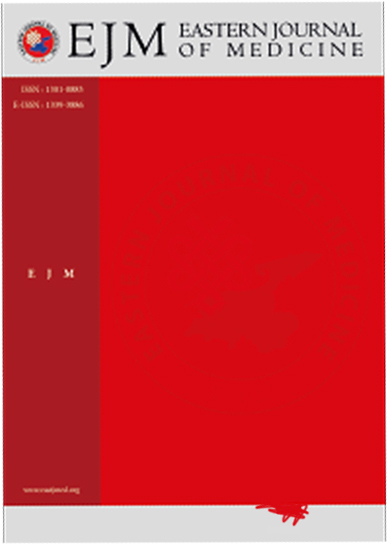Prenatal diagnosis of congenital pulmonary airway malformation (CPAM) types: Case series
Neval Cayonu Kahraman1, Nazan vanlı tonyalı2, Gokcen Orgul3, GULSAH AYNAOGLU YILDIZ4, Yaprak Engin-Ustun11Department of Perinatology, University of Health Sciences Etlik Zübeyde Hanım Women's Health Care, Traning and Research Hospital, Ankra, Turkey2Department of Perinatology, University of Health Sciences Etlik City Hospital, Ankara,Turkey
3Department of Perinatology, Selcuk University Faculty of Medicine, Konya,Turkey
4Department of Perinatology, Ankara University Faculty of Medicine, Ankara, Turkey
INTRODUCTION: This study retrospectively aims to evaluate nine cases of congenital pulmonary airway malformation (CPAM) diagnosed during the prenatal period. Prenatal diagnosis of CPAMs is critical in the diagnosis of fetal thoracic malformations. Case studies provide a better understanding of the clinical course, treatment options, and outcomes of CPAMs.
METHODS: Cases with prenatally diagnosed lung lesions screened in the high-risk pregnancy category between October 2021 and February 2024 were analyzed retrospectively. The characteristics, location, and accompanying findings of the lesions were evaluated by perinatology specialists. The diagnosis of CPAM was categorized based on prenatal ultrasound images.
RESULTS: This study show the demographic characteristics and clinical findings of the patients with CPAM. In our study, the mean age was 33 years, and the median week at diagnosis was 21 weeks and 2 days. The median birth weight was 2970 gm. The rate of vaginal delivery was 55.6%, while additional anomalies were detected at a rate of 66.7%. Most lesions were located in the right lung and had a cystic or solid-cystic nature. The distribution according to CPAM type was 22.2% type 1, 33.3% type 2, and 44.4% type 3. According to the results obtained by analyzing nine cases, two cases resulted in termination, regression was observed in two cases, and postnatal surgery was performed in one case. One case was followed up postnatally.
DISCUSSION AND CONCLUSION: This study examined the clinical course, treatment options, and outcomes of rare cases diagnosed with CPAM. The results highlight the importance of prenatal and postnatal processes of diffeternt types of CPAM.
Manuscript Language: English














